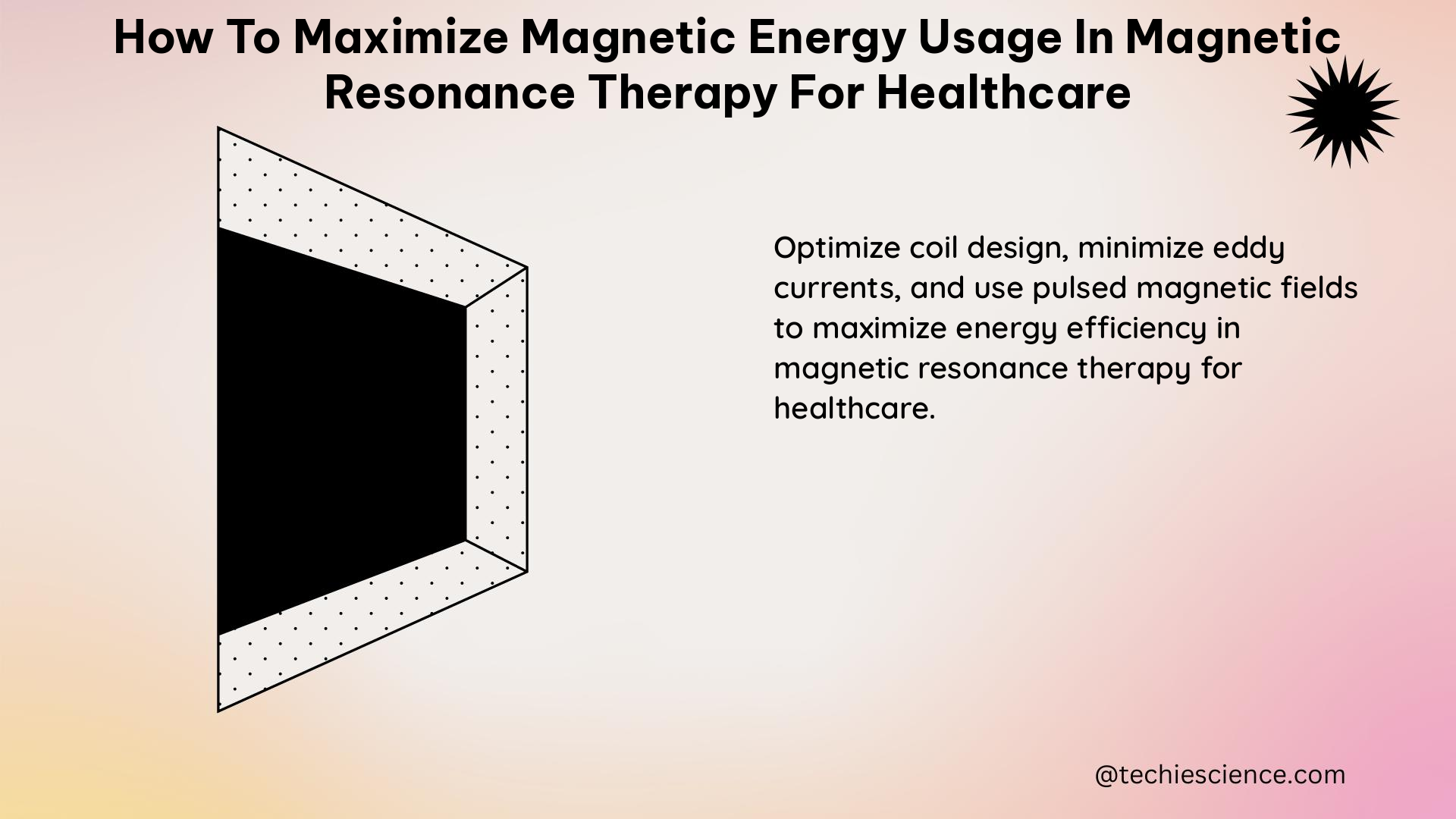Summary
Magnetic resonance therapy (MRT) is a powerful tool in healthcare, but optimizing its energy usage is crucial for improving efficiency and reducing environmental impact. This comprehensive guide delves into the key factors that can help maximize magnetic energy usage in MRT, including magnetic field strength, magnetic field homogeneity, radio frequency (RF) power, energy-saving protocols, and the integration of artificial intelligence (AI). By understanding the underlying physics principles, practical applications, and data-driven insights, healthcare professionals can unlock the full potential of MRT while minimizing energy consumption.
Magnetic Field Strength

The strength of the magnetic field is a critical factor in maximizing magnetic energy usage in MRT. Higher magnetic field strengths can lead to better image quality and faster scan times, ultimately improving the overall efficiency of the therapy.
Physics Formula:
The magnetic field strength (B) can be calculated using Ampere’s Law:
B = μ0 * I / (2 * π * r)
where μ0 is the permeability of free space, I is the current, and r is the distance from the current-carrying wire.
Physics Example:
The use of neodymium magnets in transcranial magnetic stimulation (TMS) is an example of how high-strength magnetic fields can be used to stimulate neural electrical activity and treat conditions like major depression. A study found that the occurrence rate of patients with major depression declined by 48% in the treatment group using neodymium magnets, compared to 19% in the control group.
Physics Numerical Problem:
In MRI, a common problem is calculating the magnetic field strength needed to excite a specific anatomic area and increase the field of view (FOV). This can be calculated using the formula:
B = γ * H * Δt
where γ is the gyromagnetic ratio, H is the magnetic field strength, and Δt is the duration of the magnetic field pulse.
Figures:
The distribution of the magnetic field in MRI can be visualized using field maps, which show the magnetic field strength and homogeneity throughout the imaging volume.
Data Points:
A study using neodymium magnets in TMS found that the occurrence rate of patients with major depression declined by 48% in the treatment group, compared to 19% in the control group.
Values and Measurements:
The magnetic field strength used in MRI can range from 0.5 to 3 Tesla, with higher field strengths leading to better image quality and faster scan times.
Magnetic Field Homogeneity
In MRI, it is crucial to have a homogeneous magnetic field to excite a larger anatomic area and increase the field of view (FOV). Achieving magnetic field homogeneity can be accomplished through the use of shim coils, which are designed to correct magnetic field inhomogeneities.
Physics Example:
The use of magnetic implants in rabbit tibia is an example of how magnetic fields can be used to reinforce bone tissue and improve bone density. A study found that magnetic implants reinforced both the medulla and cortex around the bone tissue, with a statistically significant increase in the medulla.
Data Points:
A study using magnetic implants in rabbit tibia found that the magnetic implants reinforced both medulla and cortex around the bone tissue, with a statistically significant increase in the medulla.
Radio Frequency (RF) Power
The RF power used in MRI can also impact magnetic energy usage. Higher RF power can lead to better signal-to-noise ratio (SNR) and faster scan times, but it can also lead to increased heating of the patient.
Values and Measurements:
The RF power used in MRI can range from 1 to 100 watts, with higher power leading to better SNR and faster scan times, but also increased heating of the patient.
Energy-Saving Protocols
Implementing eco protocols, such as using Eco Power Mode in MRI systems, can help lower energy consumption by up to 30% without compromising image quality or patient safety.
Data Points:
A study found that using Eco Power Mode in MRI systems can lower energy consumption by up to 30% without compromising image quality or patient safety.
Artificial Intelligence (AI)
Introducing AI can help optimize magnetic energy usage in MRI by predicting and adapting to patient movement, reducing the need for repeat scans and saving energy.
Theoretical Explanation:
The use of magnetic fields in MRI and TMS is based on the principle of magnetic resonance, where magnetic moments in the body align with the applied magnetic field and emit a signal that can be detected and used to create images or stimulate neural electrical activity.
Conclusion
By understanding and implementing the key factors discussed in this guide, healthcare professionals can maximize magnetic energy usage in magnetic resonance therapy, leading to improved efficiency, reduced environmental impact, and better patient outcomes. The integration of advanced physics principles, practical applications, and data-driven insights can help unlock the full potential of MRT and drive the future of healthcare technology.
References
- https://www.ncbi.nlm.nih.gov/pmc/articles/PMC6323575/
- https://www.siemens-healthineers.com/perspectives/energy-savings-in-MRI
- https://www.ncbi.nlm.nih.gov/pmc/articles/PMC9318684/
- https://www.ncbi.nlm.nih.gov/pmc/articles/PMC6323575/#B13-ijerph-15-00632
- https://www.ncbi.nlm.nih.gov/pmc/articles/PMC6323575/#B14-ijerph-15-00632
- https://www.ncbi.nlm.nih.gov/pmc/articles/PMC6323575/#B15-ijerph-15-00632
- https://www.ncbi.nlm.nih.gov/pmc/articles/PMC6323575/#B16-ijerph-15-00632
- https://www.ncbi.nlm.nih.gov/pmc/articles/PMC6323575/#B17-ijerph-15-00632
- https://www.ncbi.nlm.nih.gov/pmc/articles/PMC6323575/#B18-ijerph-15-00632
- https://www.ncbi.nlm.nih.gov/pmc/articles/PMC6323575/#B19-ijerph-15-00632
- https://www.ncbi.nlm.nih.gov/pmc/articles/PMC6323575/#B41-ijerph-15-00632

The lambdageeks.com Core SME Team is a group of experienced subject matter experts from diverse scientific and technical fields including Physics, Chemistry, Technology,Electronics & Electrical Engineering, Automotive, Mechanical Engineering. Our team collaborates to create high-quality, well-researched articles on a wide range of science and technology topics for the lambdageeks.com website.
All Our Senior SME are having more than 7 Years of experience in the respective fields . They are either Working Industry Professionals or assocaited With different Universities. Refer Our Authors Page to get to know About our Core SMEs.